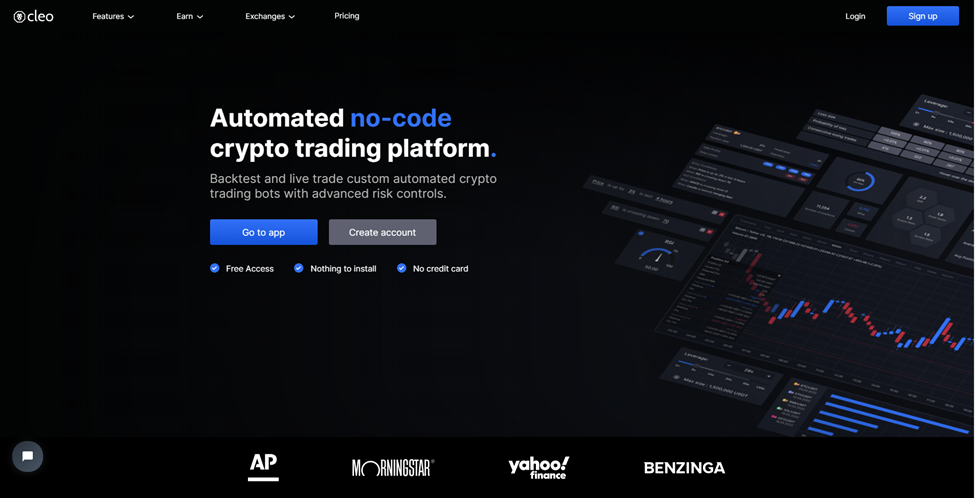Good Facts For Picking Automated Systems
Wiki Article
What Exactly Is Automated Trading?
Automated trading systems, often known as algorithmic trading or black-box trading are computer programs that utilize mathematical algorithms to make trades based on specific conditions. Automated systems for trade execution allow traders to execute trades automatically without the intervention of human beings.
Trade rules- Automated trade systems are designed to adhere to specific trading rules. They decide when to open or close trades.
Data input - Automated trade systems process massive amounts of market information at a rapid pace. They then use the information to make trade decisions.
Execution - Automated trade execution systems can process trades at a speed, frequency and in a manner that is not possible for a human trader.
Risk management - Automated Trading Systems are programmable to implement risk management strategies (such as stop-loss or size of positions) to minimize the possibility of losses.
Backtesting- Automated trading systems can be tested in the backtesting process to determine their performance and spot any problems prior to being deployed for live trading.
Automated trading platforms have the advantage of being able to execute trades swiftly and efficiently without having to be monitored by humans. Automated trading platforms process large amounts information in real-time and make trades according to specific rules and conditions. This can reduce emotional trading and increase reliability.
There are certain risks that come with automated trading systems such as the possibility of the system to fail, mistakes in the trading regulations, and a lack of transparency in the process of trading. Therefore, it is crucial to test and validate an automated trading system before it is implemented in live trading. View the best trading platforms for more advice including backtesting trading strategies, backtest forex software, crypto strategies, algo trading strategies, forex tester, free crypto trading bots, algorithmic trading, position sizing trading, backtesting in forex, backtesting trading and more.

What Is The Basic Principle Of Trading Automation Systems?
Automated trading systems process huge amounts of market information in real-time and execute trades based on certain rules and conditions. The steps can be divided into three steps Determining the strategies for tradingThis is the initial step in establishing the strategy for trading. This could include indicators like moving averages, as well as other factors like news or price action events.
Backtesting- After the trading strategy has been established, the next step is back-testing the strategy on historical market data to evaluate its performance and identify any issues. This is a crucial step as it allows traders to see how the strategy has performed in the past, and makes any adjustments before it is implemented in live trading.
Coding- Once the trading strategy has been backtested and verified, the next step is to codify the strategy into an automated trading system. This involves writing the rules and conditions for the strategy in programming languages such as Python or MQL.
Data input- Automated trading systems require real-time market information for making trading decisions. The data is usually obtained through a feed of data from the market data vendor.
Trade execution- The automated trading system will execute the trade after the market information and conditions are processed. This includes sending trade orders to the brokerage. They will then execute trades on the market.
Monitoring and reporting - Automated trade systems often include reporting and monitoring features that let traders observe the system's performance and spot any issues that could be present. This may include real-time performance reports as well as alerts for any unusual activity in the market and trade logs.
Automated trades can occur within milliseconds. This makes them quicker than a human trader who would have to process the information and create an order. This speed and accuracy could aid you in trading more efficiently and effectively. It is important to test thoroughly an automated trading platform before it can be utilized for live trading. Have a look at the top what is backtesting in trading for blog examples including backtesting trading strategies, crypto backtesting, stop loss order, trading psychology, stop loss in trading, algo trade, are crypto trading bots profitable, crypto futures, automated trading platform, crypto trading bot and more.

What Was The Outcome Of Flash Crash 2010.
The 2010 Flash Crash was a sudden and severe market crash that happened on the 6th of May in 2010. The crash was marked by a swift and dramatic decline in the prices of stocks across the major U.S. exchanges, then a rapid recovery in just a few minutes.The causes of the crash at first unclear however, subsequent investigations by the U.S. Securities and Exchange Commission (SEC) and the Commodity Futures Trading Commission (CFTC) discovered that a variety of factors were responsible for the crash. These factors were:
HFT (High-frequency trading) HFT (High-frequency Trading) HFT algorithms use sophisticated mathematical models to perform trades based upon market data. They comprise the majority of stock market volume. These algorithms generated high volume of trades which led to instability in the market and increased selling pressure in the aftermath of the flash crash.
Order cancellations - Order cancellations were made possible by HFT algorithms. They could cancel orders if there was an economic trend that was not favorable. This added selling pressure after the flash crash.
Liquidity - The flash crash was also due to a lack of liquidity in the market. Market makers and other players retreated briefly from the market during this crash.
Market structure - The complex and fragmented structure of the U.S. stock market, with various exchanges and dark pools made it difficult for regulators to observe and react to the market collapse in real-time.
The flash crash caused serious consequences on the financial markets. It caused massive losses for individuals as well as market participants. Also, there was a reduction in investor confidence and a decrease in the stability of the stock market. In reaction to the flash crash, regulators introduced various measures to increase the security of the stock market which included circuit breakers that temporarily stop trading in the individual stocks in times of extreme volatility. They also increased transparency within the market. Have a look at the recommended free crypto trading bot for site tips including algorithmic trading bot, backtesting trading strategies free, crypto daily trading strategy, crypto backtesting platform, backtesting tool, automated trading system, best indicators for crypto trading, which platform is best for crypto trading, backtesting tool, trade indicators and more.
